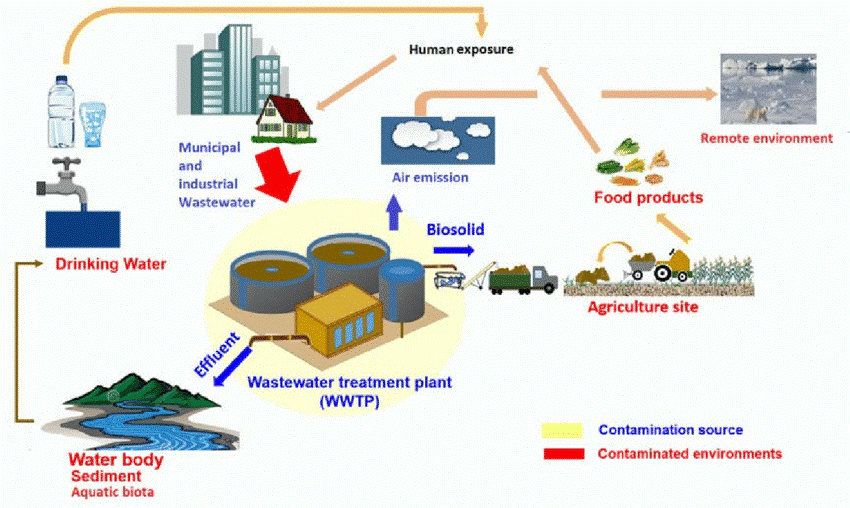Innovative PFAS Treatment Solutions for Safer Water
The boosting occurrence of PFAS contamination in water products necessitates a crucial assessment of ingenious treatment remedies. Advanced filtration technologies and novel chemical treatments present appealing methods for minimizing these consistent contaminants. Furthermore, arising bioremediation strategies provide an even more lasting approach to taking on PFAS challenges. As governing structures proceed to adjust, understanding the effectiveness and scalability of these solutions becomes critical. What implications do these advancements hold for public health and environmental reconstruction, and just how can stakeholders properly execute them in diverse contexts?
Review of PFAS Contamination
PFAS contamination has become a substantial ecological and public wellness concern. Per- and polyfluoroalkyl compounds (PFAS) are a team of synthetic chemicals recognized for their persistence in the environment and body, leading them to be generally referred to as "permanently chemicals." These compounds have been widely made use of in numerous industries, including firefighting foams, water-repellent fabrics, and food packaging, largely as a result of their water- and grease-resistant residential properties.
The prevalent use of PFAS has actually caused their discovery in soil, water products, and even in the blood of human beings and pets. Researches have linked PFAS exposure to countless health issues, consisting of developing effects in infants, body immune system disorder, and different kinds of cancer cells. In addition, the environmental perseverance of these substances complicates their degradation and removal, elevating concerns about long-term ecological impacts.
Regulative bodies are progressively carrying out rigid standards to monitor and minimize PFAS degrees in alcohol consumption water and other environmental mediums. As recognition of PFAS contamination grows, it has actually become crucial for communities and markets to look for efficient treatment services to alleviate direct exposure and safeguard public health.
Advanced Filtration Technologies
As the urgency to resolve PFAS contamination intensifies, progressed filtering innovations have actually emerged as a pivotal element in the remediation initiatives focused on removing these persistent chemicals from water sources. These technologies leverage innovative devices to properly target and capture PFAS compounds, which are notoriously immune to conventional therapy methods.
Among one of the most appealing strategies is the use of granular activated carbon (GAC), which adsorbs PFAS particles due to its high surface area and porous framework. This method has been commonly executed in both municipal and commercial settings, showing substantial decreases in PFAS concentrations. Furthermore, ion exchange materials have actually obtained grip, especially developed to uniquely bind PFAS ions from water, thus facilitating their elimination.
Membrane filtering modern technologies, such as reverse osmosis and nanofiltration, likewise show efficacy in PFAS elimination by physically separating pollutants from water - pfas management. These systems can attain high Click This Link degrees of purity, making them ideal for drinking water applications
Chemical Therapy Advancements
Various chemical treatment advancements are being checked out to successfully deal with PFAS contamination in water products. One appealing approach includes using innovative oxidation processes (AOPs), which use effective oxidants such as ozone, hydrogen peroxide, or chlorine dioxide integrated with UV light to break down PFAS compounds right into less hazardous substances. This technique has actually demonstrated efficacy in research laboratory setups, showing possible for scalability in real-world applications.
Another ingenious technique is the development of ion-exchange materials especially developed to target PFAS. These materials can uniquely adsorb PFAS substances from water, permitting their removal during treatment procedures. Current developments have actually boosted the efficiency and capability of these materials, making them a positive option for water therapy centers.
In addition, researchers are investigating the use of chemical agents like persulfate and ferrous ions to enhance the destruction of PFAS in infected water. These agents can generate chemical reactions that facilitate the failure of consistent PFAS compounds.
Emerging Bioremediation Techniques
Recent developments in chemical treatment technologies have led the way for checking out bioremediation techniques as a viable choice for addressing PFAS contamination. Bioremediation harnesses the all-natural metabolic processes of bacteria to degrade or change contaminants, making it an enticing technique for dealing with persistent contaminants like PFAS.
Arising strategies in bioremediation include using genetically engineered microorganisms that can especially target and damage down PFAS substances. These microbial strains are being created for their boosted deterioration capabilities, boosting the efficiency of the remediation procedure. Additionally, scientists are checking out the potential of plant-assisted bioremediation, where specific plant species might uptake and sequester PFAS from polluted soil and water.
An additional promising method is the application of bioaugmentation, which includes presenting advantageous bacteria right into infected settings to boost the degradation of PFAS. This approach can facilitate much faster remediation timelines and boost total efficiency.

Governing Structures and Requirements
A comprehensive here regulative framework is vital for successfully handling PFAS contamination and making certain public health and wellness defense. The boosting recognition of per- and polyfluoroalkyl substances (PFAS) as toxic wastes has prompted various federal and state firms to create criteria that govern their presence in water products. The U.S. Environmental Security Agency (EPA) has actually established wellness advisories and is pursuing establishing enforceable limitations for PFAS in alcohol consumption water.
State-level policies differ substantially, with some states adopting stricter standards than those suggested by the EPA. These laws often consist of maximum contaminant degrees (MCLs) for specific PFAS substances, tracking needs, and reporting responsibilities for water utilities. Additionally, arising frameworks concentrate on the remediation of infected websites, stressing the need for reliable therapy modern technologies.

Conclusion
In verdict, the growth and implementation of innovative PFAS therapy options are essential for resolving the prevalent problem of water contamination. Advanced filtration innovations, chemical therapies, and emerging bioremediation strategies jointly present a multifaceted method to properly lower and degrade PFAS levels. As regulatory frameworks continue to progress, integrating these modern technologies will be crucial to secure public health and wellness and recover the stability of polluted water sources, eventually adding to a cleaner and more secure setting.